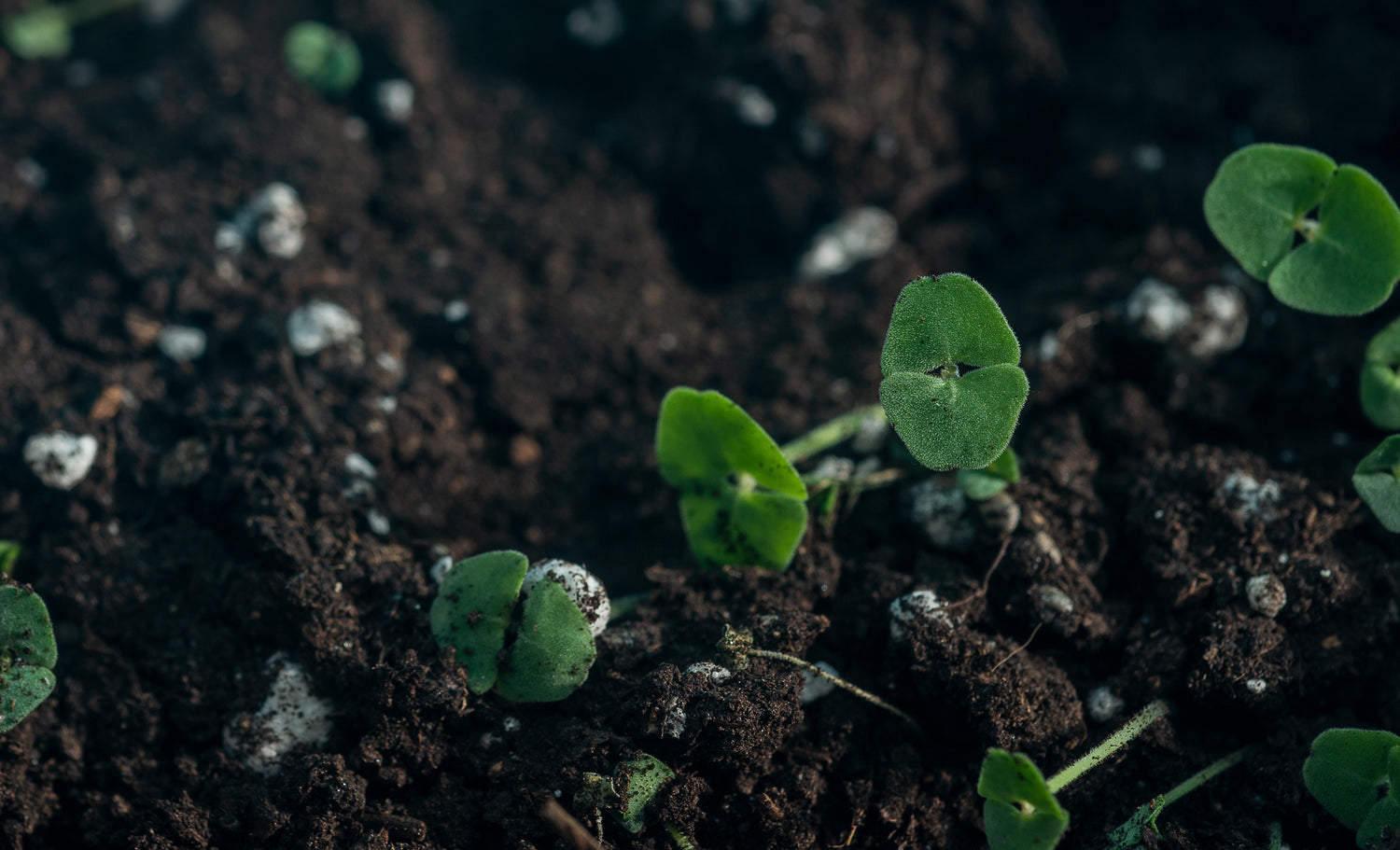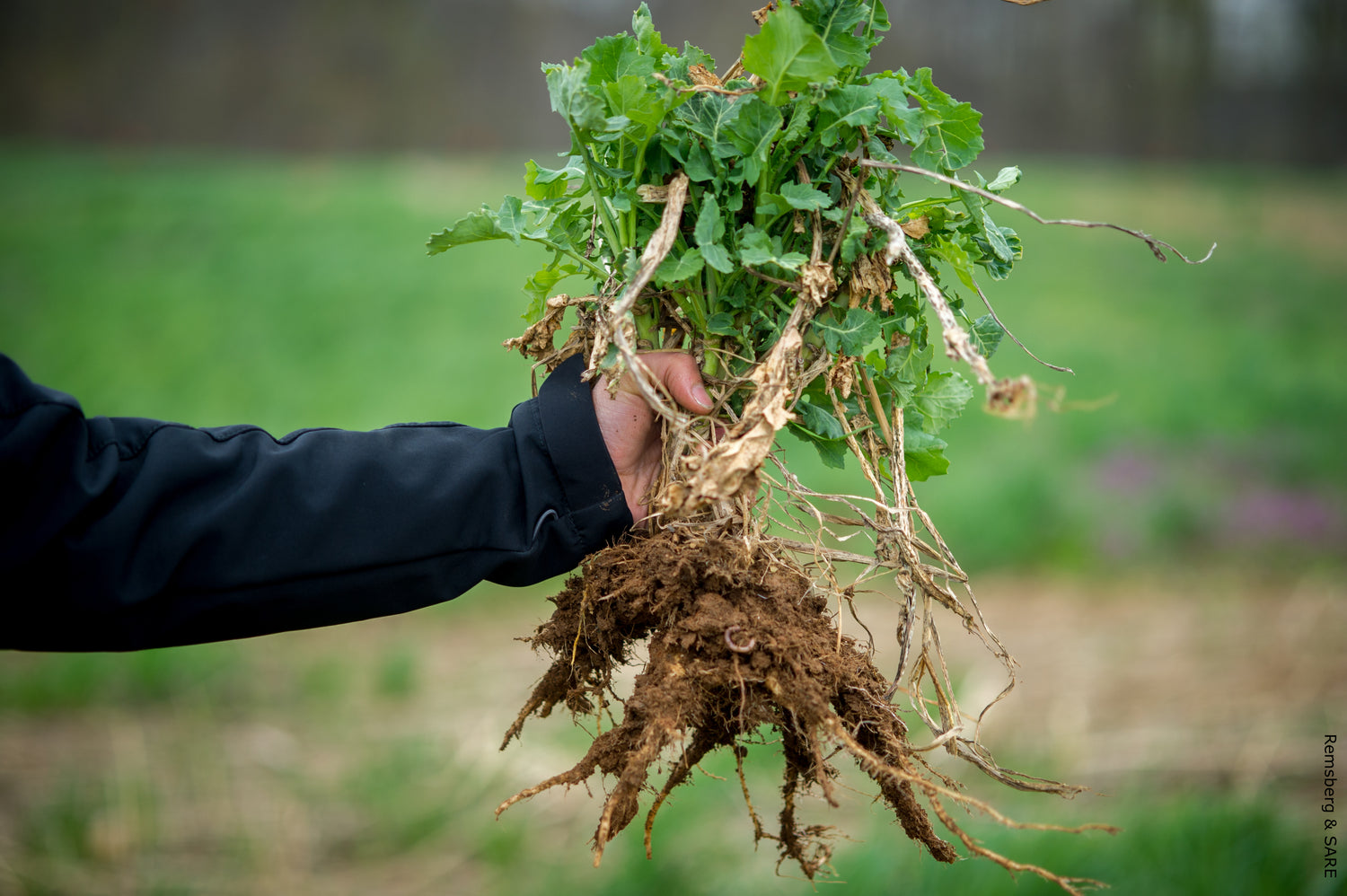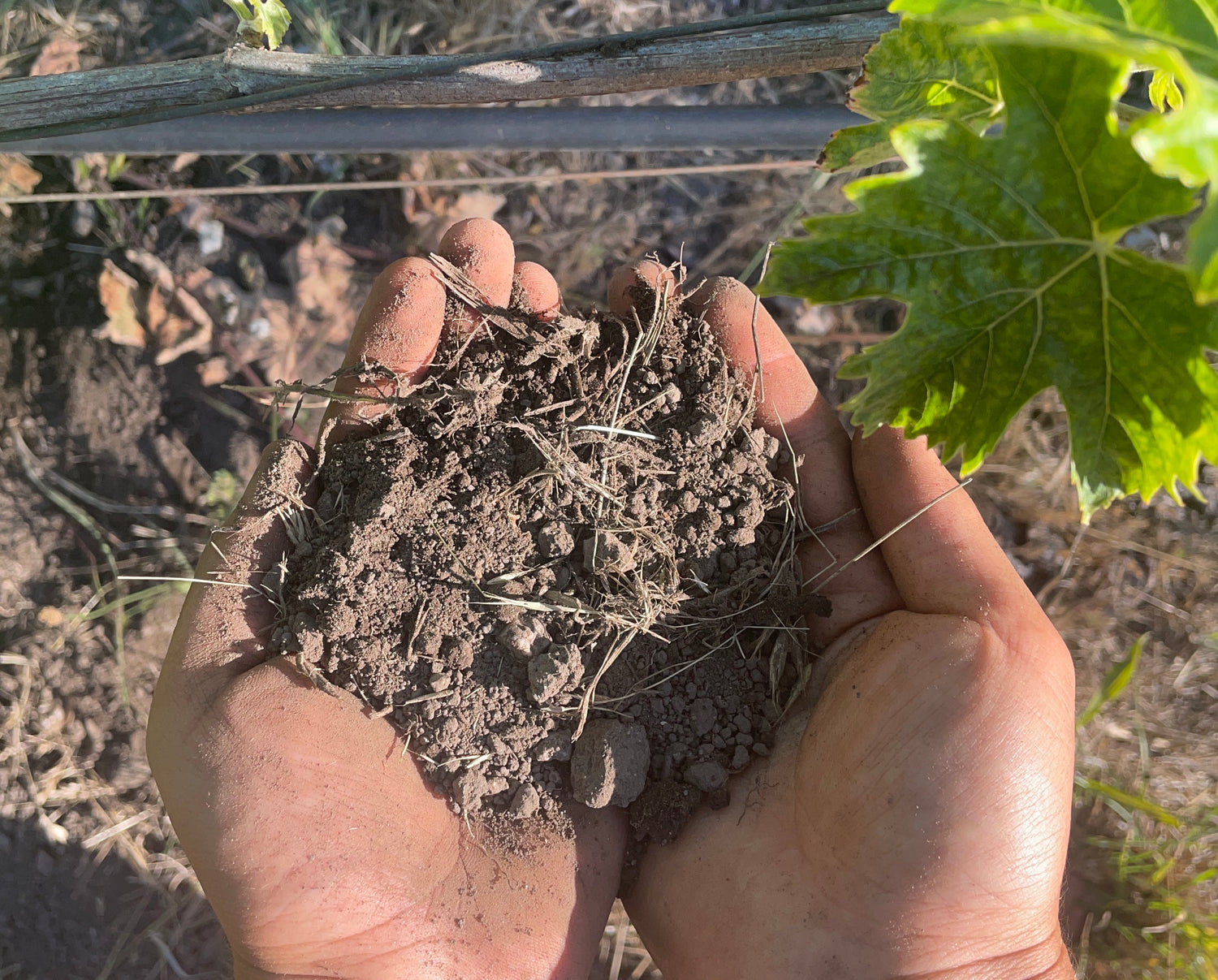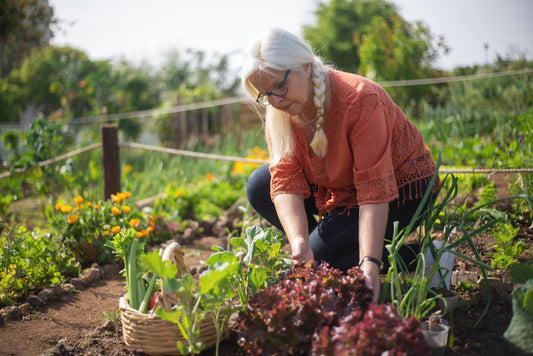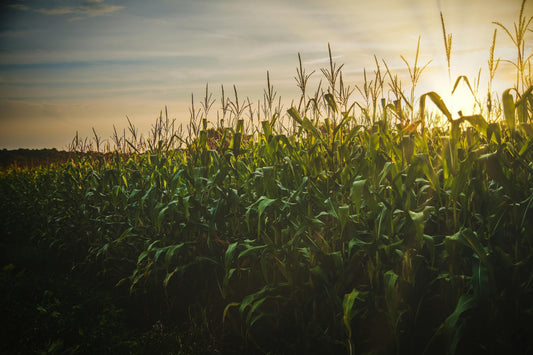Texas encompasses the nation's largest agricultural landscape with 132 million acres of farmland supporting a $24.9 billion economy, featuring diverse soil orders from Gulf Coast Vertisols to High Plains Mollisols, while facing unprecedented challenges from drought, development pressure, and economic recession documented in extensive peer-reviewed research.
Texas Agricultural Soils: Comprehensive Research and Economic Impact Analysis 2025
Texas agriculture faces severe economic challenges with net farm income dropping 25% from 2022 to 2024, representing nearly $40 billion in losses, while soil erosion costs $113.92 per acre annually. However, conservation practices demonstrate significant benefits, with no-till systems doubling organic matter and cotton farmers using soil health practices reducing costs by $53 per acre while increasing net income by $150 per acre, based on comprehensive research from Texas A&M AgriLife, USDA-ARS, and the Soil Health Institute.
Economic Crisis in Texas Agriculture
Agricultural Recession and Income Collapse
Texas farmers and ranchers' income decreased 25 percent from 2022, which makes 2024 the largest recorded year-to-year dollar drop in net farm income. According to the farm bureau, the profit farmers see after paying for operating expenses, known as net farm income, has dropped nearly $40 billion this year compared to 2023.
The U.S. Department of Agriculture anticipates a decrease in net farm income, dropping from $156 billion in 2023 to $116 billion in 2024, with production expenses estimated to increase 4%, or $16.7 billion, in 2024, totaling $455 billion. The largest cost increases include marketing and transportation (up 12%), labor (up 7.5%), and pesticides (up 7.2%).
Texas farmland declined by more than 1.6 million acres with a loss of over 17,700 farms, according to the latest Census of Agriculture. This dramatic consolidation represents a fundamental shift in Texas agriculture, making it increasingly difficult for new farmers to enter the industry and for existing farmers to maintain viable operations.
Drought and Climate Impact Economics
While Texas is the nation's leading cotton producer, farmers are contending with poor soil moisture, which leads to reduced yields and higher production costs. The latest USDA crop production report says corn production in 2024 was 199.4 million bushels, down from 256.2 million bushels in 2023.
Drought impacts extend beyond immediate crop losses. The lack of sufficient rainfall has affected the availability of forage crops, leading to poor grazing conditions. As a result, ranchers have to spend more on supplemental feed, further increasing costs. These conditions force ranchers to cull older animals, prioritizing survival of younger cattle despite significant economic strain.
Soil Erosion Economic Impacts
The Pimentel study estimated yield losses beginning with 7.7% for corn, while other researchers found almost 8.8% corn yield loss at lower levels of erosion (15 cm of topsoil removed) and 19.6% at high rates of erosion (30cm soil removed). When adjusted for inflation, soil erosion could cost $113.92 per acre per year in losses.
Of the 32 million acres of cropland in Texas, more than 12.8 million acres or 40 percent are classified as highly erodible. With an average loss of 14 tons of soil per acre annually, Texas is one of the eight worst states for soil erosion rates. The amount of soil erosion that most cropland can tolerate without reducing production is termed by the United States Department of Agriculture the "T" factor. In Texas, the "T" factor for most cropland is about five tons per acre per year.
Soil erosion in the United States costs the country about $37.6 billion in productivity losses each year, with Texas contributing significantly to these national losses due to its extensive agricultural acreage and high erosion rates.
Land Use Pressure and Development Threats
Unprecedented Farmland Loss
Texas is an agricultural state with $24.9 billion in annual revenues from farms and nearly 132 million acres of agricultural land. Roughly 25% of this agricultural land is considered "Nationally Significant," meaning that it is among the nation's best land for growing food and crops.
In Texas, 1,373,000 acres of agricultural land were developed or compromised, representing an unprecedented loss of productive capacity. Five-hundred and fifty-five thousand acres of Texas's "Nationally Significant" farmland was impacted by development, pushing intensive food production to more marginal lands, where input costs are higher, yields are lower, and soils degrade more quickly.
The hot spots for development are around Austin, Dallas-Fort Worth, Houston, Odessa and San Antonio. However, the threat is more than just urban sprawl. Texas' agricultural land is disproportionately threatened by a new, more insidious kind of development discovered by AFT through this research, termed low-density residential, or LDR, land use.
Low-Density Residential Development Impact
Roughly 50% of the land developed or compromised in Texas fell into this category of low-density residential development. In Texas, LDR is 30 times more likely to be converted to urban and highly developed land use than other agricultural land.
LDR land use compromises opportunities for farming and ranching, making it difficult for farmers to get into their fields or travel between fields. New residents not used to living next to agricultural operations often complain about farm equipment on roads or odors related to farming. Retailers such as grain and equipment dealers, on which farmers rely, are often pushed out.
Conservation Practice Success Stories
No-Till Revolution in Texas
Steve Marten, an experienced farmer from Holliday, Texas, expressed to the audience how his no-till practices had doubled the organic matter and water holding capacity in his fields, which helped him withstand droughts for longer periods of time than conventional tillage methods.
Research from the Texas High Plains demonstrates remarkable conservation success. The pair primarily farm cotton on their land near Littlefield, Texas. Mike attended a soil health conference in Lubbock in 2017 and came home encouraged to change their conventional farm tillage to a no-till management system, with a cover crop rotation. The first year, he yielded 3.88 bales of cotton per acre on a test field, which helped encourage his father to adopt no-till practices farm-wide.
Comparison of soil loss from cotton fields in northern Alabama found that no-till plots averaged two to nine times less soil loss than tilled plots. One study in Kentucky reported that no-till methods decreased soil erosion by an astounding 98%.
Cover Crop Benefits
"After a heavy, 1-3 inch rainfall, that's where cover crops really shine. We have no runoff, no wash-outs, and the water in our ditches and ponds is clean. I wish all farmers knew how a cover crop can help them take advantage of all the sunshine, rain, and growing that can take place from September through November to improve soil health", reported Burton Heatwole from Georgia, representing similar conditions applicable to Texas systems.
As the rainfall simulator "rained" on the pans with the different practices, onlookers were able to watch as the conventional till, bare ground and concrete surface immediately had runoff, whereas the no-till and grass pasture pans had no runoff, demonstrating the dramatic water infiltration benefits of conservation practices.
Carbon Sequestration and Economic Opportunities
U.S. Regenerative Cotton Fund
The U.S. Regenerative Cotton Fund is an Industry-First Initiative to Assist Farmers in Implementing Regenerative Agricultural Practices Across More Than One Million Acres of U.S. Cotton Cropland; Drawing Down One Million Metric Tons of Carbon Dioxide Equivalent from the Atmosphere by 2026.
The USRCF will initially operate in four states – Arkansas, Texas, Mississippi and Georgia and will look to expand into Alabama, North Carolina, Missouri, California and Oklahoma as these nine states represent 85 percent of U.S. cotton production. The $5 million grant will establish the U.S. Regenerative Cotton Fund (USRCF), which will distribute funding to cotton farmers in Arkansas, Texas, Mississippi and Georgia for adopting practices like cover cropping and no-till.
Economic Insights: By assessing 19 farms representing 108,000 acres in Texas, Georgia, Mississippi, North Carolina, and South Carolina, researchers found farms implementing soil health management systems reduced production costs by an average of $53 per acre, increasing net farm income by an average of $150 per acre in their cotton rotations.
Carbon Market Potential
Beginning in 2017, the Southern Sustainable Agriculture Research and Education program funded a grant project to study carbon farming and assembled a Texas-based team of university researchers, soil scientists, farmers, ranchers and specialists from the USDA.
By studying the correlation between soil health assessments, land management practices and soil carbon levels, the team looked to find the best methods for long-term carbon sequestration. At the same time, they evaluated the potential of programs that provide economic incentives for producers who sequester carbon in the soil.
Research indicates that farmers expressed concerns about the convoluted, burdensome and unpredictable nature of receiving offset credits and emphasized that they were implementing practices for their own business interests and sustainability concerns, not the financial incentive of the generation of carbon credits, suggesting that direct production benefits rather than carbon payments drive adoption.
Research Infrastructure and Long-Term Studies
Texas A&M AgriLife Research Network
Texas A&M AgriLife Research serves all 254 Texas counties and operates 15 research centers throughout the state. The agricultural experiment station division is headquartered at Texas A&M's flagship campus in College Station, Texas, providing comprehensive research infrastructure across the state's diverse agricultural regions.
The Texas A&M AgriLife Blackland Research & Extension Center is a leader in land and water solutions, serving Texas for over 100 years. Blackland scientists are developing new technologies and management strategies to improve water, soil, and other natural resources on agricultural, urban, and military lands in central Texas and around the world.
The EPIC (Environmental Policy Integrated Climate), APEX (Agricultural Policy Environment Extender), SWAT (Soil and Water Assessment Tool), and PHYGROW (Phytomass Growth Model) models are deployed world-wide as people seek to: increase agriculture production and water supply; improve the environment and the economic well-being of people; and increase the sustainability of land.
USDA Agricultural Research Service Centers
Grassland Soil and Water Research Laboratory: The mission of our Laboratory is to develop technology and solutions that increase efficient use of soil and water resources, enhance forage and crop production, and support sustainable agricultural production in healthy ecosystems.
The USDA-ARS network in Texas includes multiple specialized facilities focusing on soil and water management, livestock nutrient management, and crop germplasm research. Hydrologic and Water Quality System (HAWQS) is a user-friendly platform linking SWAT with the soil, landscape, climate, weather, crop, livestock, and management data required, as well as statistical and graphical tools needed to evaluate outputs.
Soil Health Assessment and Testing
Texas A&M Soil Testing Infrastructure
The Soil, Water and Forage Testing Laboratory is part of the Department of Soil and Crop Sciences, Texas A&M AgriLife Extension Service, and The Texas A&M University System. The laboratory's primary mission is to provide research based analysis and non-bias recommendations for agronomic and non-agronomic soil analysis, plant tissue analysis, forage nutritive analysis, and non-drinking water analysis.
Aggregate stability, permanganate-oxidizable active organic matter, and total carbon analyses were conducted at the Texas A&M AgriLife Research Station in Stephenville, Texas. These assessments provide critical data for understanding soil health improvements under different management systems.
Advanced Soil Health Indicators
A PLFA test serves as an indicator for active carbon by measuring the living soil microbial biomass as higher levels of biomass indicate higher levels of active carbon. Another way to monitor active carbon is through permanganate-oxidizable organic matter testing.
The PLFA test offers a direct, rapid assessment of living microbial biomass and community structure, providing valuable insights into soil health that are not captured by chemical soil tests alone. This advanced testing helps farmers understand the biological activity crucial for soil health and carbon sequestration.
Conservation Program Implementation
Texas Climate-Smart Initiative
John Foster, program officer for the Texas State Soil and Water Conservation Board (TSSWCB), gave an update on Texas Climate-Smart Initiative (CSI), a five-year multi-commodity pilot project the TSSWCB is partnering in to transition Texas' large agricultural sector to climate-smart agriculture and forestry (CSAF) practices and develop new markets for climate-smart commodities.
Foster explained how the project plans to provide financial incentives for a wide array of climate-smart practices including cover crops, forestry practices, grazing and pasture management practices and nutrient management. This comprehensive approach addresses multiple aspects of soil health and agricultural sustainability.
NRCS Conservation Programs
Eileen Vale, NRCS resource team leader in Iowa Park, visited with the audience about various Farm Bill conservation programs can help producers implement practices such as cover crops. The NRCS provides both technical and financial assistance for implementing soil health practices across Texas.
In some cases, USDA programs and the Natural Resources Conservation Service (NRCS) are providing funding to help producers implement water-saving technologies or improve irrigation systems to make better use of available water resources.
Regenerative Agriculture Policy Development
Texas House Bill 5339
Extreme soil degradation is an active threat to our country's agricultural future and food security. What's more, conventional agricultural methods are becoming increasingly unaffordable for small farmers while perpetuating a cycle of debt for many large farmers in Texas.
H.B. 5339 would create the Higher Education Regenerative Agriculture Grant Program, administered by the Texas Higher Education Coordinating Board (THECB), to fund public institutions of higher education conducting research, education, and outreach on regenerative agriculture.
The bill would encourage projects that reduce pesticide use, enhance soil health, and promote regenerative farming through independent, evidence-based methods. Grants administered and awarded by THECB would support initiatives like student-led research, technical assistance for farmers, and partnerships with local conservation districts.
Soil Health Demonstration Results
Rainfall Simulator Demonstrations
USDA Natural Resources Conservation Service (USDA-NRCS) Soil Scientist John Sackett and Agronomist Trent Manly set up the NRCS rainfall simulator and explained what happened when the raindrops fall on five different land management practices they had as part of the demonstration.
The demonstrated practices included no-till with residue management, conventional till, grass pasture, bare ground and concrete surface. As the rainfall simulator "rained" on the pans with the different practices, onlookers were able to watch as the conventional till, bare ground and concrete surface immediately had runoff, whereas the no-till and grass pasture pans had no runoff.
These dramatic demonstrations provide visual evidence of conservation benefits that resonate with farmers and policymakers, showing immediate impacts of management decisions on soil and water resources.
Cotton Production Soil Health Research
Southeastern Cotton Systems
From a review of 20 studies in the region, SOC increased with no tillage compared with conventional tillage by 0.48 +/- 0.56 Mg C ha(-1) yr(-1). Research demonstrates that more diverse rotations of cotton with high-residue-producing crops such as corn (Zea mays L.) and small grains would sequester greater quantities of SOC.
The U.S. Regenerative Cotton Fund supports the SHI Internship program, providing access and opportunity to develop careers in decision-making positions in agriculture, specifically in the U.S. cotton industry. This program helps build the next generation of soil health professionals.
Future Challenges and Opportunities
Climate Resilience Building
Texas agriculture faces increasing climate variability, but soil health practices offer resilience solutions. "The farmer is like a football offensive coordinator," Roy analyzed. "He is constantly trying to figure out what the defense, the weather, is going to do. I feel like the no-till and cover crops help you play offense a little better".
Enhanced soil organic matter and improved water holding capacity provide critical drought buffering, essential for Texas agriculture facing increasing precipitation variability. The documented ability of conservation practices to double water holding capacity represents a significant adaptation strategy.
Economic Recovery Through Soil Health
While Texas agriculture faces severe economic challenges, soil health practices offer a pathway to improved profitability. The documented $150 per acre net income increase through soil health management systems, combined with reduced production costs, provides economic incentives for adoption even without carbon market payments.
The land availability, the capital investment it's going to take. The cash flow that it's going to take represents ongoing challenges, but conservation practices can reduce input costs and improve cash flow through enhanced productivity and reduced fertilizer requirements.
Research Integration and Scaling
Multi-Institutional Collaboration
Texas agricultural soil research benefits from unprecedented collaboration between Texas A&M AgriLife Research, USDA-ARS facilities, the Soil Health Institute, and state agencies. The "project" is, in fact, an interrelated set of projects that have cooperated in the development of a set of computer-based tools to analyze the sources of water contamination in streams and reservoirs by bacteria, sediment, nitrogen, phosphorus, and pesticides.
This integrated approach provides comprehensive tools for watershed-scale assessment and management, enabling evidence-based policy development and practice implementation across Texas's diverse agricultural regions.
Technology Transfer and Education
The workshop was part of a two-day agricultural event that included the Wichita Falls Farm and Ranch Expo. While the workshop presentations from research experts Emily Ball with the Soil Health Institute, Dr. Paul Delaune, representing Texas A&M Agrilife Research, and Dr. Katie Lewis, associate professor at Texas Tech University were all excellent, the information shared by the featured farmers really resonated with the audience.
The combination of research expertise and farmer experience provides effective technology transfer, essential for scaling conservation practices across Texas's 132 million acres of agricultural land.
Conclusion
Texas agricultural soil research reveals both significant challenges and promising solutions. While the state faces an unprecedented agricultural recession with $40 billion in income losses and severe soil erosion affecting 40% of cropland, conservation practices demonstrate clear pathways to recovery. No-till systems doubling organic matter and water holding capacity, combined with documented $150 per acre net income increases from soil health practices, provide economic incentives for widespread adoption.
The extensive research infrastructure, including Texas A&M AgriLife's 15 research centers, USDA-ARS facilities, and collaborative modeling tools, positions Texas as a leader in agricultural soil science. The U.S. Regenerative Cotton Fund's goal of sequestering 1 million metric tons of CO2 equivalent by 2026 demonstrates the scale of opportunity available through soil health implementation.
Integration of policy initiatives like the Texas Climate-Smart Initiative with on-farm demonstration projects provides comprehensive support for conservation adoption. The dramatic results shown through rainfall simulators and documented farmer success stories create compelling evidence for soil health benefits beyond traditional economic metrics.
Continued investment in long-term research programs and enhanced technology transfer will be crucial for addressing climate challenges while maintaining Texas's position as a leading agricultural state. The extensive research findings provide robust scientific foundation for evidence-based policy development and practice implementation at regional and national scales.
Sources
- Texas Real Estate Research Center. Texas Agricultural Economy's Biggest Challenges. https://trerc.tamu.edu/blog/texas-agricultural-economys-biggest-challenges/
- Texas Capitol. H.B. 5339 Analysis - Regenerative Agriculture Grant Program. https://capitol.texas.gov/tlodocs/89R/analysis/html/HB05339E.htm
- Texas Farm Bureau. Record drop expected for 2024 farm income. https://texasfarmbureau.org/record-drop-expected-for-2024-farm-income/
- American Farmland Trust. Texas Farmland is the Most Threatened in the Nation. https://farmland.org/blog/texasfarmland
- USDA National Agricultural Statistics Service. Texas - Crop Progress and Condition Reports. https://www.nass.usda.gov/Statistics_by_State/Texas/Publications/Crop_Progress_&_Condition/index.php
- University of Colorado Boulder. Soil degradation costs U.S. corn farmers a half-billion dollars every year. https://www.colorado.edu/today/2021/01/12/soil-degradation-costs-us-corn-farmers-half-billion-dollars-every-year
- Science. Environmental and Economic Costs of Soil Erosion and Conservation Benefits. https://www.science.org/doi/10.1126/science.267.5201.1117
- PNAS. Soil erosion and agricultural sustainability. https://www.pnas.org/doi/10.1073/pnas.0611508104
- farmdoc daily. A Menace to National Welfare Reconsidered, Part 1: Reviewing the Costs of Erosion. https://farmdocdaily.illinois.edu/2024/03/a-menace-to-national-welfare-reconsidered-part-1-reviewing-the-costs-of-erosion.html
- Texas Center for Policy Studies. Soil - Chapter 5. http://www.texascenter.org/almanac/Land/SOILCH5P1.HTML
- Nature Communications. An assessment of the global impact of 21st century land use change on soil erosion. https://www.nature.com/articles/s41467-017-02142-7
- NRDC. Erosion 101: Everything You Need to Know About Soil Erosion. https://www.nrdc.org/stories/soil-erosion-101
- MDPI Water. Soil Erosion and Surface Water Quality Impacts of Natural Gas Development in East Texas, USA. https://www.mdpi.com/2073-4441/4/4/944
- ScienceDirect. Scientific case studies in land-use driven soil erosion in the central United States. https://www.sciencedirect.com/science/article/pii/S2095633917301843
- Texas A&M Department of Soil and Crop Sciences. https://soilcrop.tamu.edu/
- Texas A&M AgriLife Extension Service - Soil. https://agrilifeextension.tamu.edu/assets/environment-natural-resources/soil/
- TCEQ. Texas A&M AgriLife Research, Blackland Research and Extension Center. https://www.tceq.texas.gov/p2/events/teea/winners/teea-winners-2023/texas-a-m-agrilife-research-blackland-research-and-extension-center
- Texas A&M AgriLife Blackland Research & Extension Center. https://blackland.tamu.edu/
- Texas A&M AgriLife Extension Service. https://agrilifeextension.tamu.edu/
- Texas A&M Soil, Water and Forage Testing Laboratory. https://soiltesting.tamu.edu/
- Texas A&M AgriLife Research & Extension Center at Overton. https://overton.tamu.edu/
- Texas A&M AgriLife Research. https://agriliferesearch.tamu.edu/
- Texas A&M AgriLife Research and Extension Center at Amarillo. https://amarillo.tamu.edu/
- Texas A&M AgriLife Extension Service - Agriculture and Natural Resources. https://www.dallascounty.org/departments/tx-agrilife/anr.php
- Soil Health Institute. Exploring the Impact of the U.S. Regenerative Cotton Fund. https://soilhealthinstitute.org/our-work/initiatives/us-regenerative-cotton-fund/
- Soil Health Institute. Ralph Lauren Corporate Foundation and Soil Health Institute Unveil New U.S. Regenerative Cotton Program. https://soilhealthinstitute.org/news-events/usrcf-press-release/
- Soil Health Institute. Enriching Soil, Enhancing Life. https://soilhealthinstitute.org/
- Nature Climate Action. Farmer perspectives on carbon markets incentivizing agricultural soil carbon sequestration. https://www.nature.com/articles/s44168-023-00055-4
- Agri-Pulse. Ralph Lauren Foundation, Soil Health Institute announce $5M grant for regenerative cotton practices. https://www.agri-pulse.com/articles/16687-ralph-lauren-foundation-soil-health-institute-announce-5m-grant-for-regenerative-cotton-practices
- SARE Southern. New Research Sheds Light on the Potential of Carbon Farming in Texas. https://southern.sare.org/news/new-research-sheds-light-on-the-potential-of-carbon-farming-in-texas/
- Houston Law Review. A Hitchhiker's Guide to Carbon Capture and Sequestration Regulation in Texas and Beyond. https://houstonlawreview.org/article/117181-a-hitchhiker-s-guide-to-carbon-capture-and-sequestration-regulation-in-texas-and-beyond
- Soil Health Institute Press Releases. https://soilhealthinstitute.org/news-events/category/press-releases/
- PubMed. Soil organic carbon sequestration in cotton production systems of the southeastern United States: a review. https://pubmed.ncbi.nlm.nih.gov/16825457/
- Stephen F. Austin State University. Soil, Plant and Water Analysis Laboratory. https://www.sfasu.edu/academics/colleges/forestry-agriculture/academics/agriculture/research-outreach/soil-plant-water-analysis-lab
- USDA-ARS. Texas Research Locations. https://www.ars.usda.gov/state/?id=TX
- Wikipedia. Texas A&M AgriLife Research. https://en.wikipedia.org/wiki/Texas_A&M_AgriLife_Research
- Texas A&M AgriLife Organic. Soil testing, soil results, soil test labs. https://agrilifeorganic.org/2024/03/04/soil-testing-soil-results-soil-test-labs/
- USDA NRCS. Soil Health Takes Center Stage. https://www.nrcs.usda.gov/conservation-basics/conservation-by-state/texas/news/soil-health-takes-center-stage
- Texas A&M AgriLife Center at Corpus Christi. https://ccag.tamu.edu/







